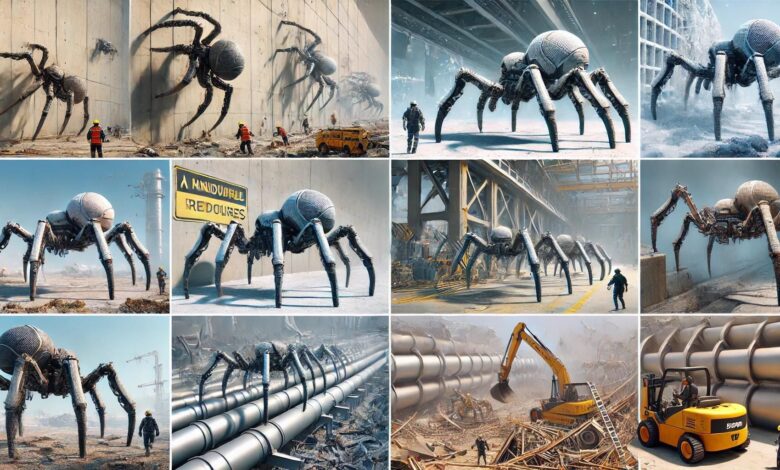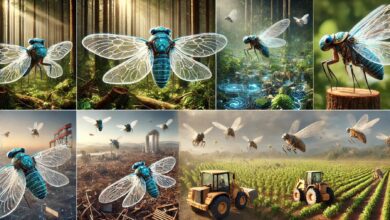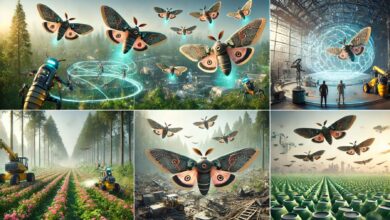Spider Feet

Nature often serves as a profound source of inspiration for technological advancements. At Tengri Space, our innovative research in swarm robotics has been significantly influenced by the intricate and highly efficient design of spider feet. Spiders, with their remarkable ability to navigate various surfaces and environments, offer valuable insights into creating robotic systems capable of operating in both atmospheric and non-atmospheric conditions. This comprehensive article delves into the anatomy and functionality of spider feet, their biological significance, and how they inspire our cutting-edge robotics. Additionally, we will address several common questions about spider feet to provide a deeper understanding of these fascinating creatures.
The Anatomy of Spider Feet
Spiders belong to the class Arachnida and are known for their exceptional locomotion abilities. Each spider has eight legs, and the feet at the end of these legs are complex structures equipped with various adaptations that enable them to adhere to different surfaces.
Structure and Composition
Spider feet consist of several segments, with the last segment known as the tarsus. The tarsus is equipped with a variety of specialized structures, including claws, scopulae, and setae. The claws are used for gripping rough surfaces, while the scopulae and setae provide adhesion on smooth surfaces. Scopulae are dense tufts of hair-like structures that increase surface area contact, and setae are tiny hair-like extensions that can interact with surface molecules through van der Waals forces, providing additional grip.
The combination of these structures allows spiders to move effortlessly across diverse terrains, including vertical walls and ceilings. This multifunctionality is a key aspect that makes spider feet an ideal model for developing versatile robotic systems.
Spider Feet and Swarm Robotics
At Tengri Space, our research in swarm robotics has drawn significant inspiration from the mechanics of spider feet. Swarm robotics involves the coordination of multiple robots to perform tasks collaboratively, and the adaptability of spider feet offers an excellent model for developing such systems.
Biomimicry in Robotic Design
By studying spider feet, we have developed robotic appendages that mimic their structure and functionality. These robotic feet are designed to operate in both atmospheric and non-atmospheric conditions, leveraging the principles observed in spiders. The microstructures on spider feet, such as setae and scopulae, have inspired the development of materials that are lightweight, durable, and capable of adhering to various surfaces. These materials enhance the adaptability and efficiency of our robotic systems, allowing them to operate in environments where traditional mobility solutions would fail.
Enhanced Mobility and Adaptability
The versatility of spider feet in adhering to different surfaces has been a critical influence on our robotic designs. Our robots are equipped with feet that can adapt their adhesion mechanisms based on the surface they encounter. This adaptability is crucial for missions that involve navigating complex and unpredictable terrains, such as planetary exploration or search and rescue operations. The ability to transition seamlessly from smooth to rough surfaces without losing grip ensures that our robots maintain stability and control in diverse environments.
Coordination and Communication
Spiders exhibit remarkable coordination and agility, often moving swiftly and precisely to capture prey or evade threats. This behavior has been a model for our swarm robotics systems, where multiple robots must work together seamlessly. By understanding the neural and muscular control mechanisms in spiders, we have developed algorithms that enable our robots to communicate and coordinate their movements effectively. These algorithms ensure synchronized and efficient operations, even in dynamic and challenging environments.
Applications of Spider-Inspired Robotics
The application of spider-inspired robotics extends beyond space exploration. These systems hold potential in various fields, including environmental monitoring, disaster response, and industrial maintenance.
Environmental Monitoring
In the field of environmental monitoring, spider-inspired robots can be deployed to gather real-time data on various ecological conditions. Their ability to traverse difficult terrains, such as rocky cliffs or dense vegetation, allows them to access areas that are challenging for traditional monitoring equipment. These robots can be equipped with sensors to measure air quality, soil composition, and water purity. Their adaptable feet ensure stability and precision in data collection, providing valuable insights for conservation efforts and environmental management.
Disaster Response
Spider-inspired robotics also hold significant potential in disaster response scenarios. In the aftermath of natural disasters like earthquakes, landslides, and floods, quick and efficient search and rescue operations are vital. The versatility and grip of spider feet can be replicated in robotic systems to navigate through debris, enter collapsed structures, and locate survivors. These robots can communicate with each other to cover large areas systematically, ensuring that no region is overlooked. Their ability to operate in harsh conditions, such as unstable rubble or wet environments, makes them indispensable tools for emergency responders.
Industrial Maintenance
In industrial settings, spider-inspired robots can be used for maintenance and inspection tasks in challenging environments. Their ability to adhere to vertical and inverted surfaces allows them to inspect pipelines, tanks, and other structures that are difficult to access. Equipped with cameras and sensors, these robots can detect structural damage, corrosion, or leaks, providing real-time data for maintenance crews. This capability enhances safety and efficiency, reducing the need for manual inspections in hazardous conditions.
Common Questions About Spider Feet
How Many Feet Does a Spider Have?
Spiders have eight feet, as they possess eight legs. Each leg ends in a foot equipped with specialized structures for adhesion and locomotion. The number of legs and feet is a distinguishing characteristic of arachnids, setting them apart from insects, which typically have six legs.
Are Spider Veins on Feet Dangerous?
The term “spider veins” refers to small, dilated blood vessels visible near the surface of the skin, often found on the legs or face of humans. They are not related to spiders or their anatomy. Spider veins are generally not dangerous but can be a cosmetic concern for some individuals. In rare cases, they might indicate an underlying venous issue, and it is advisable to consult a healthcare professional if there are concerns about circulation or leg health.
How Do Spider Man’s Feet Stick to Walls?
In the fictional world of Spider-Man, the character’s ability to stick to walls is attributed to his spider-like powers. This ability is often depicted as a result of microscopic setae on his hands and feet, similar to the real-life structures on spider feet. These setae interact with surfaces at a molecular level through van der Waals forces, allowing Spider-Man to adhere to walls and ceilings. While fictional, this concept is inspired by the actual adhesion mechanisms observed in spiders and other climbing animals.
What Causes Spider Veins on Feet?
Spider veins on human feet are caused by various factors, including genetics, age, prolonged standing or sitting, hormonal changes, and certain medical conditions. They occur when the valves in the veins weaken, causing blood to pool and the veins to dilate. Preventive measures include regular exercise, maintaining a healthy weight, and avoiding prolonged periods of immobility. Compression stockings and medical treatments are available for those seeking to reduce the appearance of spider veins.
Conclusion
The study of spider feet offers profound insights into both biology and engineering. At Tengri Space, we have harnessed these insights to develop advanced swarm robotics systems, drawing inspiration from the intricate design and functionality of spider feet. As we continue to explore the natural world, we remain committed to leveraging biomimicry to push the boundaries of technology and innovation. Through understanding and emulating the wonders of nature, we can create robotic systems that are not only efficient and resilient but also capable of addressing some of the most pressing challenges of our time.



